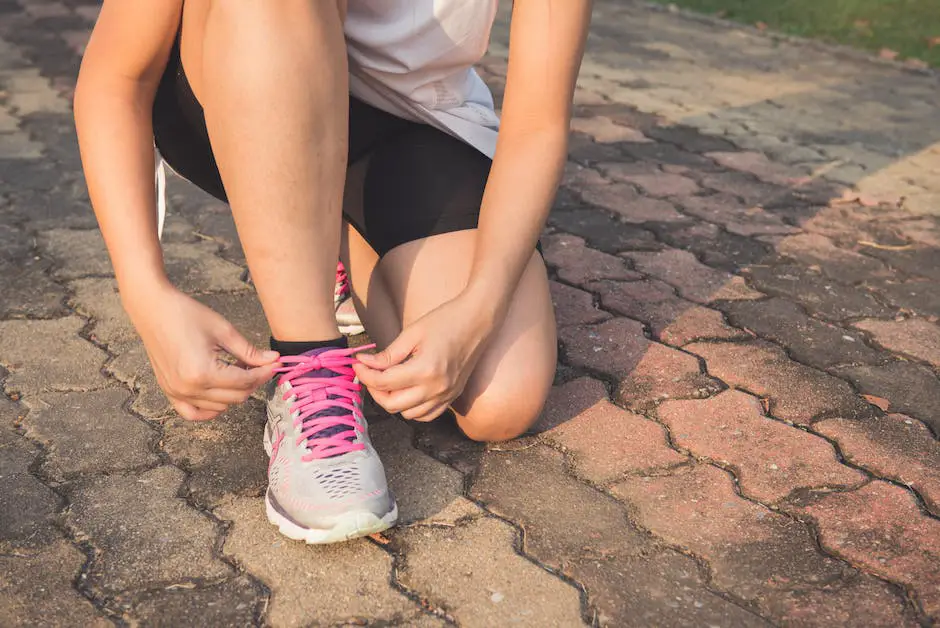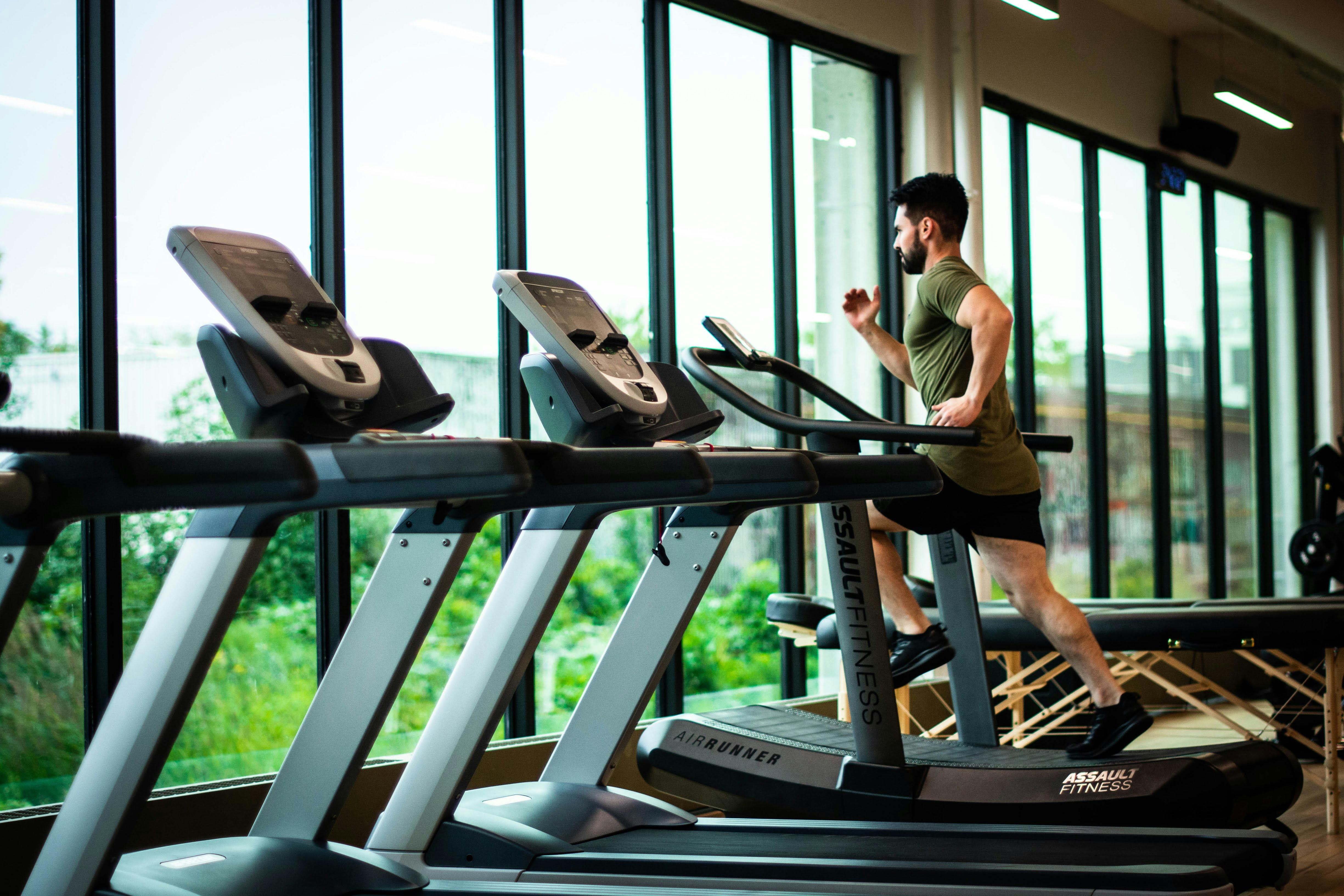Should You Wear Compression Socks While Running

Compression socks have become a popular item among athletes and runners. They are designed to provide extra support and compression to your legs while running. Compression socks can help reduce muscle fatigue, improve circulation, reduce swelling, and decrease the risk of injury. But should you wear compression socks while running? This article will discuss the pros and cons of wearing compression socks while running to help you decide if they are right for you.Compression socks are specialized socks that provide graduated compression to improve blood flow and reduce swelling in the feet, ankles, and legs. They are often worn by athletes and people who travel long distances, as well as those with medical conditions such as diabetes or varicose veins. Compression socks are typically made from a blend of synthetic fibers such as nylon or spandex and feature an elastic band that runs around the top of the sock. This helps to create a snug fit that helps to reduce swelling and improve circulation.
Benefits of Wearing Compression Socks While Running
Compression socks have become increasingly popular among runners. They are designed to provide extra support and comfort to the feet and lower legs, which can improve performance and reduce injury risk. Compression socks are also thought to improve circulation in the lower legs, which can help prevent cramping and swelling. Here are some of the benefits of wearing compression socks while running:
Improved Performance: Compression socks provide extra support to the feet and lower legs, which can help improve running performance. The extra cushioning and support can reduce fatigue in the feet and legs, allowing runners to go longer distances with less effort.
Reduced Risk of Injury: Compression socks offer extra support to the muscles and joints of the lower legs, which can reduce the risk of injury when running. The added cushioning helps absorb shock from running on uneven terrain or hard surfaces, making it easier on your body.
Improved Circulation: Compression socks are designed to promote improved circulation in the lower legs. This is important for runners because it helps keep their muscles warm and prevents cramping or swelling during long runs. The improved circulation also helps reduce lactic acid buildup in the muscles, which can improve recovery time after a run.
Better Comfort: Wearing compression socks while running can make your run more comfortable. The added cushioning provides extra protection from impact while running on hard surfaces or uneven terrain. The compression also helps keep your feet dry, reducing discomfort from blisters or chafing.
Overall, wearing compression socks while running can provide many benefits for runners including improved performance, reduced injury risk, improved circulation, and better comfort. So if you’re looking for a way to improve your runs, consider trying out a pair of compression socks!
Choosing the Right Compression Sock
Choosing the right compression sock can be a daunting task, especially if you’re new to them. Compression socks come in a variety of sizes, materials, and styles, so it’s important to know what features to look for when buying a pair. Here are some tips on how to select the best compression sock for your needs:
Consider Your Activity Level
The activity level you plan on engaging in while wearing your compression socks should be taken into consideration. If you’re an avid runner, for example, you’ll want a sock that is lightweight and breathable. For those who are standing or sitting for long periods of time, a heavier sock with more cushioning may be the better option.
Know Your Measurements
It’s important to know your measurements before purchasing compression socks. Compression socks come in various sizes and lengths, so it’s important to measure your calf circumference and leg length before buying a pair. This will ensure that you get the best fit possible.
Choose Quality Materials
When shopping for compression socks, make sure you choose high-quality materials such as nylon or spandex. These materials are breathable and stretchy, which will provide more comfort and support throughout the day. Avoid cotton blends as they can cause irritation.
Opt For Gradient Compression
Gradient compression is ideal for those looking for maximum support from their compression sock. This type of sock is designed with graduated levels of compression along the entire length of the leg, providing maximum support and improved blood flow circulation.
By keeping these tips in mind when shopping for a new pair of compression socks, you can rest assured that you’ll find one that is perfect for your needs. With proper care and maintenance, your new pair should last you years to come!
How to Wear Compression Socks Correctly
Compression socks are designed to provide support and stability to your legs by increasing the blood flow and circulation in your veins. In order to get the most out of these socks, it is important to wear them correctly. Here are some tips on how to properly wear compression socks:
1. Make sure you have the right size. Compression socks should fit snuggly, but not so tight that they cut off your circulation or cause discomfort. Take the time to measure your feet and calves so that you can find a pair that fits properly.
2. Put them on after you shower or bathe. It is much easier to put on compression socks when your skin is still damp from a shower or bath. This will help them slide on more easily and ensure that they fit properly.
3. Start at the ankle and work up. When putting on compression socks, start at the ankle and gradually pull them up your leg until they reach mid-thigh level. Make sure there are no wrinkles in the sock as this could decrease their effectiveness.
4. Wear them for no more than eight hours per day. Even though compression socks can provide relief from tired legs and swollen feet, they should not be worn for longer than eight hours per day as this could lead to skin irritation.
5. Take them off before bedtime. To ensure you get a good night’s rest, make sure you take off your compression socks before bedtime as they can become too uncomfortable if worn overnight.
By following these simple tips, you will be able to get the most out of wearing compression socks and enjoy all of their benefits!
Pros of Wearing Compression Socks While Running
Compression socks can be beneficial for runners, as they can help improve blood flow and reduce swelling. They can also provide extra support to the muscles, helping to reduce fatigue and muscle soreness. Additionally, when running in colder weather, compression socks can help keep the feet warm and dry. Finally, compression socks can help reduce the risk of injury by providing extra stability and support to the feet and ankles.
Cons of Wearing Compression Socks While Running
The main disadvantage of wearing compression socks while running is that they can be uncomfortable. Some runners find them too tight or restrictive, which can make it difficult to run properly. Additionally, they are more expensive than regular running socks, so they may not be a practical option for everyone. Finally, some people may have an allergic reaction to the material used in compression socks.

Risks of Not Wearing Compression Socks While Running
Compression socks are a great asset to any runner’s wardrobe, offering numerous benefits that keep runners running safely and comfortably. Unfortunately, many runners still fail to take advantage of the numerous benefits compression socks can provide, leaving them vulnerable to a variety of potential health risks.
The most common risk of not wearing compression socks while running is increased fatigue. When running, the feet and legs experience a lot of strain from the repetitive impact. Compression socks work to reduce this strain by providing support to the muscles and improving circulation. Without this support, runners may experience greater fatigue during and after their runs.
Furthermore, not wearing compression socks while running can also lead to an increased risk of injury. Without proper support and circulation, muscles are more likely to become strained or torn from the continuous impact they endure while running. Additionally, without compression socks, there is no additional cushioning for the feet and ankles that can help absorb some of the shock from each stride.
Finally, not wearing compression socks may also lead to an increased risk of developing varicose veins or other vascular issues due to poor circulation in the lower legs. Poor circulation can cause blood to pool in the veins instead of being properly circulated throughout the body which can lead to unpleasant symptoms such as swelling and discomfort in the lower legs.
Overall, it is clear that there are risks associated with not wearing compression socks while running which should be considered before hitting the road or trail for your next run. Taking advantage of the numerous benefits offered by these specialized garments can help protect you from potential injury and discomfort while allowing you to enjoy your runs more fully!
Compression Socks are Uncomfortable
Compression socks may seem uncomfortable at first, but after a few minutes of wearing them, most people find them to be relatively comfortable. Compression socks are designed to provide a snug and secure fit, so they can feel snug. But they are made from breathable fabrics that allow air to circulate, so they don’t cause the same kind of discomfort as traditional socks. Plus, compression socks come in a variety of sizes and styles, so you can find the perfect fit for your feet.
Compression Socks are Only for Medical Reasons
While compression socks can be used to treat certain medical conditions, they are also beneficial for everyday wear. Compression socks improve circulation, reduce swelling, and help prevent injuries caused by extended periods of standing or sitting. They can also help reduce fatigue and pain from everyday activities such as walking or running. So even if you don’t have any medical conditions, compression socks can still provide great benefits.
Compression Socks Don’t Provide Any Relief
Contrary to popular belief, compression socks do provide relief from tired and sore legs. The graduated pressure applied by compression stockings helps increase blood flow and reduce swelling. This helps ease muscle fatigue and pain while reducing the risk of further injury or strain on the legs. Additionally, compression stockings can help improve overall energy levels by providing extra support when standing or walking.
Compression Socks Only Come in Neutral Colors
Compression socks come in a variety of colors and patterns so you don’t have to settle for plain white or black stockings! There are many different colors and patterns available so you can choose a pair that matches your personal style. Whether you prefer bold colors or subtle patterns, there is sure to be a pair of compression socks that appeals to your taste.
Is Wearing A Waist Trainer While Working Out Beneficial for Running Performance?
Wearing a waist trainer while working out can enhance your fitness experience. Many athletes believe in the benefits of waist trainers during workouts, citing improved posture and core support. This added stability may help runners maintain proper form, potentially leading to better performance and reduced risk of injury.
Tips for Wearing Compression Socks While Running
Compression socks are becoming increasingly popular among runners for their ability to reduce fatigue, swelling, and discomfort. Wearing compression socks while running can help improve blood circulation, reduce lactic acid buildup, and even decrease the risk of injury. To get the most out of your compression socks while running, it’s important to follow some basic guidelines. Here are some tips for wearing compression socks while running:
First, make sure you’re wearing the right size. Compression socks should be snug but not overly tight. Be sure to measure your leg before buying a pair so you can find a pair that fits properly. You should also pay attention to the material used in the socks – they should be breathable and comfortable.
Next, take breaks throughout your run. It’s important to take breaks when wearing compression socks because they can cause your legs to become overheated if worn too long without rest. Make sure you stop and stretch during your run so you don’t overheat.
Finally, don’t forget to wash them after each use. Compression socks collect sweat and dirt easily so it’s important to wash them regularly in order to reduce bacteria build-up and maintain comfortability when running in them. Be sure to follow the instructions provided by the manufacturer when washing them.
By following these tips for wearing compression socks while running, you’ll be able to reap all the benefits they offer without any of the drawbacks. Whether you’re an experienced runner or just getting started, compression socks can help improve your performance and comfort on runs.

Conclusion
Compression socks are a great choice for runners looking to improve their performance and reduce the risk of injury. The increased blood flow can help reduce fatigue and soreness, while the snug fit can prevent blisters and other foot issues. Compression socks also have a number of other benefits such as increased circulation, improved posture, and better recovery. However, it is important to note that compression socks are not suitable for everyone and it is best to consult with your doctor before using them.
Overall, compression socks can be a worthwhile addition to any runner’s wardrobe. With the range of benefits they provide, they can help you become a better runner while reducing the risk of injury. So if you’re looking for an extra edge on your next run, give compression socks a try!
